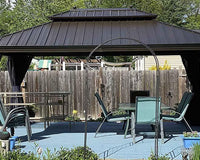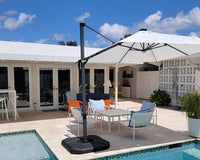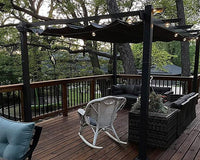Imagine: As your guests settle on the bar stools, an uncomfortable wobble threatens to transform a great evening into an unpleasant experience during your dinner party. One important safety issue that may ruin or enhance the entertainment area in your house is barstool stability. Unstable chairs could cause floor damage, possible injuries, and embarrassing situations none the host wants to come across. This tutorial will provide thorough techniques for repairing shaky bar stools and guaranteeing that everyone who sits on your comfy, dependable seat is safe.
Why Are Bar Stools Unstable and Risky?
Common yet dangerous, barstool instability can result from several reasons. One of the most common problems is uneven flooring; even well-built stools will rock dangerously. Low-quality materials or inadequate initial construction might aggravate this issue and result in intrinsic design flaws in the stool. Wear and tear over time takes its toll; regular use loosens important fasteners and fittings.
Unstable seating has repercussions much beyond simple annoyance. An unstable barstool can create major safety concerns that might result in unplanned falls or injuries. Imagine a guest relaxing, and suddenly the stool moves; there is actual risk for injury. Moreover, continuous wobbling could ruin your flooring, harm hardwood, or wear down sensitive surfaces. Maintaining stable bar stools is not only an issue of comfort but also of responsible space management and visitor safety for homes and businesses equally.
Practical Solutions for Stabilizing Bar Stools
Mastering barstool stability requires a methodical and comprehensive approach. Begin with a thorough diagnostic inspection that goes beyond a casual glance. Create a dedicated workspace with good lighting and lay out your tools: a set of precision screwdrivers (flathead and Phillips), an adjustable wrench, a rubber mallet, and a flashlight.
Systematic Screw and Bolt Inspection

Perform a detailed hardware check using the following systematic approach:
1. Carefully examine each connection point, looking for:
- Visible rust or corrosion
- Stripped or damaged threads
- Loose or missing hardware
- Signs of previous amateur repairs
2. Tightening Techniques:
- Use the correct size screwdriver or wrench to prevent stripping.
- Apply steady, even pressure.
- For wooden stools, turn screws clockwise until you feel slight resistance.
- For metal stools, use a slight rocking motion to ensure full engagement.
3. Troubleshooting Loose Connections:
If a screw keeps spinning without tightening, it may need replacement.
For wooden stools with stripped holes, consider:
- Using slightly larger screws
- Inserting wooden toothpicks or matchsticks (without heads) with wood glue
- Using wooden dowel pins for a more permanent fix
Advanced Stabilization Techniques
Floor protectors and leveling mechanisms offer sophisticated solutions for uneven surfaces. Consider these professional-grade approaches:
1. Floor Protector Selection:
- Rubber pads: Best for hard surfaces, provide maximum grip
- Felt glides: Ideal for delicate floors like hardwood or marble
- Silicone tips: A versatile option with excellent shock absorption
- Adjustable leveling feet: Precision solution for significant height variations
2. Proper Installation Methods:
- Clean the bottoms of stool legs thoroughly before applying protectors.
- Ensure protectors are centered and securely attached.
- For leveling feet, make incremental adjustments.
- Use a carpenter's level to verify complete stabilization.
3. Anti-Slip Strategies:
- Layer multiple stabilization methods for maximum effect.
- Consider custom-cut anti-slip mats for unique floor surfaces.
- Replace anti-slip materials periodically to maintain effectiveness.
DIY Adjustments and Modifications

With the right approach, you can significantly improve your stool's stability through DIY modifications.
Structural Reinforcement
Brackets and corner braces can provide extra support for older or frequently used stools. The key is selecting hardware that matches the stool's original material and design.
When choosing brackets, consider both functionality and aesthetic appeal. Stainless steel works well for metal stools, while brass complements wooden designs.
Leg Modification Techniques
Uneven floors can wreak havoc on barstool stability. Addressing this requires careful measurement and potentially modifying leg lengths.
Always follow the carpenter's golden rule: measure twice, cut once. Use a carpenter's level to identify which legs need adjustment. A fine-toothed saw works best for clean, even cuts.
Safety is paramount during this process. Always wear protective eyewear and work in a well-ventilated area. Keep your workspace clean and organized.
Wood Glue Reinforcement
Strategic glue treatments help wooden bar stools much in need. This easy approach can revitalize aged furniture.
Start by thoroughly washing the joint regions with denatured alcohol. Older glue residue can be removed using fine-grit sandpaper. Before using any adhesive, dry-fit parts.
Apply wood glue evenly and sparingly. For a strong, safe bond, use clamps with protecting pads. Immediately wipe any extra glue.
For total curing, allow at least 24 hours. To guarantee the best strength, avoid using the stool throughout this period.
For extra joint strength, pro tip: Think about including wooden dowels. This produces a more durable and consistent fix that can greatly increase the life of your bar seat.
How to Maintain Your Bar Stools

Maintenance Basics
Regular maintenance keeps bar stools appealing and stable. Create a basic maintenance schedule to guard your investment.
Check once a month quickly. Look for obvious damage, loose screws, or wobbling. To see stability, gently rock every stool. Clean surfaces to clear trash and dust.
Investigate more thoroughly every quarter. Refine all bolts and screws. Look at leg levelers and joint integrity. Search for structural or wear-related problems.
Material-Specific Care
Wooden Stools
- Use a soft, dry microfiber cloth for daily dusting. Clean with a slightly damp cloth and mild wood soap. Avoid excessive moisture.
- Apply furniture polish every 6 months. Keep away from direct sunlight and extreme temperatures.
Metal Stools
Clean with a soft cloth and mild soap. Dry thoroughly to prevent rust. Check for paint chipping or corrosion.
Plastic Stools
Wipe with all-purpose cleaner. Check for cracks or structural weaknesses. Use soft cloths to avoid scratching.
Troubleshooting
Address loose joints by carefully tightening screws. Lubricate squeaky parts with appropriate lubricants.
Repair or Replace?
Repair minor issues like:
- Loose components
- Small cracks
- Cosmetic damage
Replace when:
- Structural damage is significant.
- Safety is compromised.
- Extensive wear exists
Keep a maintenance log and invest in quality cleaning tools to extend your bar stools' life.
Conclusion
Getting stable bar stools calls for constant maintenance, smart repairs, and close inspection. These doable fixes will help you turn insecure chairs into dependable, cozy places to relax that improve your environment. Don't let a wobbling barstool mar your next event; act now to experience the peace of mind that comes from stable seating.




